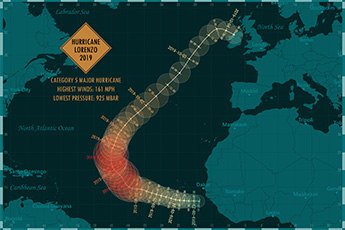In the Broadway musical “Little Shop of Horrors,” the main character, a dorky flower shop clerk named Seymour, buys a strange flytrap plant that he names after his crush, Audrey. The plant, Audrey II, has a curious taste for humans, and it manipulates Seymour into bringing people for it to eat. With each character Audrey II consumes, the plant grows larger. Eventually, Audrey II circumvents Seymour’s help and tries to eat some of the main characters, including its namesake, Audrey. While your institution won't be consuming customers anytime soon, there are some potential changes in the market that may help loan growth this year. In 2023, Community financial institutions (CFIs) dealt with economic uncertainty, higher interest rates, more expensive funding, lower loan demand, and concerns about credit quality. However, there were some changes toward the end of the year that signaled potential positive changes in the lending market.US financial institutions with less than $10B in total assets posted sequential Q3 loan growth of 1.9%. That’s less than Q2, which showed 2.5% growth, and down YoY from 3.4% in Q3 2022, but it’s still progress. More importantly, it comes at a time when larger financial institutions aren’t reporting loan growth, particularly as the largest financial institutions only reported 0.9% loan growth in Q4 of 2023. Here are a few developing trends that might serve to help your CFI increase your loan portfolio.Lower Funding CostsCFI funding costs rose in Q2, following two financial institution failures and interest rate hikes. But the pace of funding cost increase moderated in Q3, going up by 29bp, or 2.27%, from Q2. Each of the three preceding quarters saw increases above 40bp.If the Fed is done with this round of interest rate increases, and especially if rates fall in the coming year, CFIs’ funding costs will likely stabilize and may even go down. According to Stephen Scouten, a Piper Sandler analyst, margin pressure could reach a “bottom” in 2024, if the Fed concludes this series of rate hikes. This would encourage a higher rate of borrowing.Higher Loan DemandInflation, fears of a recession, and 11 rate hikes in 2022 and 2023 subdued loan demand and hurt CFIs’ interest income. Now, however, fears of a recession have eased. The US added jobs every month of 2023, and the economy grew at 4.9% in Q3 — more than double the 2.1% of Q2 and somewhat better than Q4, when GDP increased by 3.3%. Loans grew at about 1% in Q3.If these trends continue, and particularly if the Fed lowers interest rates in 2024, the coming year will likely give CFI customers more impetus to borrow. That could combine with lower funding costs to increase CFIs’ margin income.Stable Credit QualityCredit costs went steadily upward in 2023. Net loan charge-offs as a percentage of average loans and leases totaled 0.51% for Q3, up 25bp YoY. Total net charge-offs were up 103% YoY, according to S&P Global data, with credit card, commercial and industrial, construction, and auto loans particularly affected.If overall economic health continues through 2024, however, loan losses will likely be manageable overall, banking data suggests. US financial institutions set aside $19.84B for credit losses in Q3 — $2.48B less than what they held back in Q2. Most financial institutions set aside even less for credit losses in Q4. This implies that they’re growing less concerned about credit quality and have created adequate reserves.Inflation can cause increased credit problems and has combined with high interest rates to do just that in past economic cycles. But inflation is down from its 5.9% peak in 2023 to around 1.7% in Q4 of 2023. Tightly Controlled ExpensesLower costs mean higher overall earnings, all other factors being equal. 2023 saw some financial institutions work to control noninterest expenses. By cutting costs, some increased their bottom lines. Others reduced the amount of income they needed to break even — a potentially smart move in a market with less loan demand, and therefore less interest income as well.More M&AMore regulatory attention and worries about a potential recession made 2023 a slower year for mergers and acquisitions than 2022. The industry saw a total of 92 announced transactions, much less than 2022’s 168 transactions. Prices were lower in 2023 YOY for whole bank and thrift transactions. The average price to tangible book value was 128% in 2023, a drop from 155% a year earlier. If financial institutions continue to pursue M&A, likely as a way to scale costs and expand business lines and markets, 2024 may show overall M&A growth over the previous year.Despite the challenges CFIs encountered in 2023, they managed to grow their loan portfolios. The state of M&A, credit quality, loan demand, funding costs, interest rates, and the US economy as a whole began to improve by the conclusion of 2023, suggesting that loan books will continue to grow in 2024.

BID® Daily Newsletter
Mar 27, 2024
BID® Daily Newsletter
Mar 27, 2024

Feed Audrey II without Sacrificing Your Customers
Summary:
Financial institutions dealt with economic uncertainty, higher interest rates, more expensive funding, lower loan demand, and concerns about credit quality in 2023. Yet they continued to grow loans overall. There are some indicators that the lending market could begin growing again. We discuss what factors would contribute to this change.
Subscribe to the BID Daily Newsletter to have it delivered by email daily.
Related Articles:

Expect the Unexpected: the Q3’25 Economic Saga
We review September 2025 economic data and indicators, highlighting trends in consumer activity, banking industry trends, inflation, housing, and Fed policy — offering a snapshot of current financial and market conditions.
We review September 2025 economic data and indicators, highlighting trends in consumer activity, banking industry trends, inflation, housing, and Fed policy — offering a snapshot of current financial and market conditions.

Insights from the 2025 Federal Reserve CDFI Survey
CDFIs are on a mission to expand economic opportunities in historically underserved, low-income communities by providing greater access to financial products and services. We detail findings from the Federal Reserve’s recent study on their progress.
CDFIs are on a mission to expand economic opportunities in historically underserved, low-income communities by providing greater access to financial products and services. We detail findings from the Federal Reserve’s recent study on their progress.
